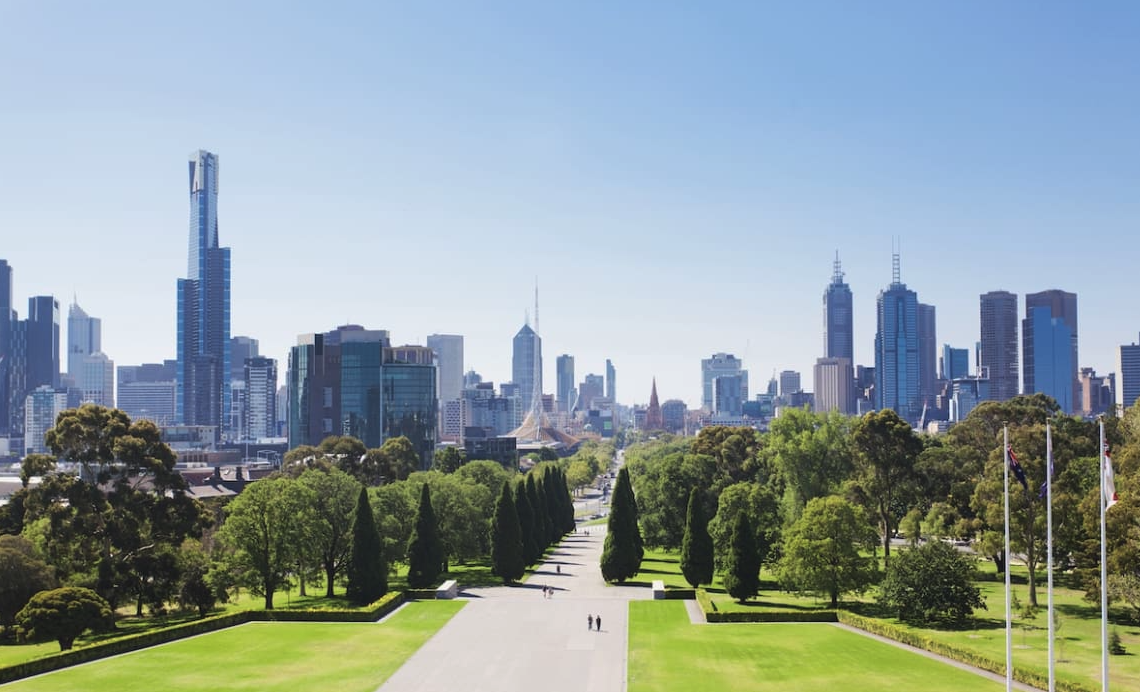Australia in Global Top 10 for Ultra-Wealthy as Property Investment Grows
Australia has cemented its place among the world’s wealthiest nations, ranking ninth globally for individuals with more than US$10 million in assets, according to Knight Frank’s newly released The Wealth Report 2025.
The report found that 1.8% of the global US$10m+ population resides in Australia, with 42,789 high-net-worth individuals (HNWIs). This places Australia ahead of Hong Kong SAR (42,715 HNWIs), Italy (41,080), South Korea (39,210), and Taiwan (28,391). The United States leads the rankings, accounting for nearly 39% of the world’s ultra-wealthy.
Knight Frank Chief Economist Ben Burston noted that while Australia faced economic headwinds in 2024 due to higher interest rates, global wealth creation remained strong.
“While several major economies, including Australia, saw sluggish growth in 2024 as higher interest rates took a toll on household incomes, robust growth in the United States supported the global economy and underpinned ongoing wealth creation,” Burston said.
Future Growth: Australia’s Wealthy Set to Expand Further
The report predicts continued growth in Australia’s ultra-wealthy population, with Australasia’s US$10m+ segment expected to rise by 5.3% by 2028. The number of individuals worth US$100 million or more in the region is also projected to grow by 4.8%, from 1,918 in 2024 to 2,010 by 2028.
Globally, the number of HNWIs increased by 4.4% in 2024, reaching 2.34 million. The trend is expected to continue, with a projected rise of 6.9% by 2028.
Real Estate Investment a Key Priority for the Wealthy
Property remains a crucial asset class for the world’s wealthiest, with a survey of 150 family offices revealing a strong appetite for real estate investment.
In Australia, 31% of family offices surveyed plan to increase their real estate holdings over the next 18 months, compared to 44% globally. The top three real estate sectors of interest for Australian investors are:
- Industrial properties (42%)
- Data centres (21%)
- Infrastructure (18%)
This contrasts with global preferences, where the leading investment sectors are living spaces (14%), industrial/logistics (13%), and luxury residential (12%).
Knight Frank CEO James Patterson highlighted the ongoing demand for real estate among ultra-wealthy investors, despite recent downturns in commercial property markets.
“More than 30 per cent of respondents expect to increase their exposure to real estate over the next 18 months,” Patterson said. “It’s evident investors are increasingly conscious that they can now acquire assets at an attractive entry point off the back of the downturn and with strong prospects of cyclical recovery in the medium term.”
Luxury Real Estate: A Top Choice for the Next Generation
The report also explored investment trends among younger high-net-worth individuals. Knight Frank’s Next Generation Survey, a global study of 1,788 wealthy individuals aged 18 to 35, found that real estate topped the list of luxury assets they aspire to own.
John McGrath, CEO of McGrath Estate Agents, Knight Frank’s Australian partner, noted that younger generations are drawn to real estate for both lifestyle and investment reasons.
“The next generation desires luxury real estate from a lifestyle point of view, but they can also see the strength of this asset class as an investment with continuing price growth around the world delivering ongoing capital gains,” McGrath said.
He added that Australia’s undersupply of luxury properties, combined with high demand, will continue to drive price appreciation in the sector.
“Australia is a particularly desirable market for luxury real estate due to its plentiful lifestyle locations, as well as being on the doorstep of all the global powerhouse nations within the Asian region.”
Wealth and Real Estate: A Lasting Connection
The findings reinforce the long-standing link between wealth accumulation and real estate investment. Family offices globally continue to allocate significant portions of their portfolios to property, seeing it as a hedge against inflation and a means of long-term wealth preservation.
As Australia’s ultra-wealthy population grows, so too does the demand for strategic real estate investment, with industrial, data centres, and infrastructure emerging as the preferred sectors.
With global wealth set to rise further, the Australian property market remains a key destination for high-net-worth individuals looking to expand their portfolios and secure long-term returns.
Records keep falling in 2025 as harbourfront, beachfront and blue-chip estates crowd the top of the market.
A divide has opened in the tech job market between those with artificial-intelligence skills and everyone else.
The 2026 McGrath Report warns that without urgent reforms to planning, infrastructure and construction, housing affordability will continue to slip beyond reach for most Australians.
Australia’s housing market has reached a critical juncture, with home ownership and rental affordability deteriorating to their worst levels in decades, according to the McGrath Report 2026.
The annual analysis from real estate entrepreneur John McGrath paints a sobering picture of a nation where even the “lucky country” has run out of luck — or at least, out of homes.
New borrowers are now spending half their household income servicing loans, while renters are devoting one-third of their earnings to rent.
The time needed to save a 20 per cent deposit has stretched beyond ten years, and the home price-to-income ratio has climbed to eight times. “These aren’t just statistics,” McGrath writes. “They represent real people and real pain.”
McGrath argues that the root cause of Australia’s housing crisis is not a shortage of land, but a shortage of accessibility and deliverable stock.
“Over half our population has squeezed into just three cities, creating price pressure and rising density in Sydney, Melbourne and Brisbane while vast developable land sits disconnected from essential infrastructure,” he says.
The report identifies three faltering pillars — supply, affordability and construction viability — as the drivers of instability in the current market.
Developers across the country, McGrath notes, are “unable to make the numbers work” due to labour shortages and soaring construction costs.
In many trades, shortages have doubled or tripled, and build costs have surged by more than 30 per cent, stalling thousands of projects.
Need for systemic reform
McGrath’s prescription is clear: the only real solution lies in increasing supply through systemic reform. “We need to streamline development processes, reduce approval timeframes and provide better infrastructure to free up the options and provide more choice for everyone on where they live,” he says.
The 2026 edition of the report also points to promising trends in policy and innovation. Across several states, governments are prioritising higher-density development near transport hubs and repurposing government-owned land with existing infrastructure.
Build-to-rent models are expanding, and planning reforms are gaining traction. McGrath notes that while these steps are encouraging, they must be accelerated and supported by new construction methods if Australia is to meet demand.
One of the report’s key opportunities lies in prefabrication and modular design. “Prefabricated homes can be completed in 10–12 weeks compared to 18 months for a traditional house, saving time and money for everyone involved,” McGrath says.
The report suggests that modular and 3D-printed housing could play a significant role in addressing shortages while setting a new global benchmark for speed, cost and quality in residential construction.
Intelligent homes
In a section titled Weathering the Future: The Power of Smart Design, the report emphasises that sustainable and intelligent home design is no longer aspirational but essential.
It highlights new technologies that reduce energy use, improve thermal efficiency, and make homes more resilient to climate risks.
“There’s no reason why Australia shouldn’t be a world leader in innovative design and construction — and many reasons why we should be,” McGrath writes.
Despite the challenges, the tone of the 2026 McGrath Report is one of cautious optimism. Demand is expected to stabilise at around 175,000 households per year from 2026, and construction cost growth is finally slowing. Governments are also showing a greater willingness to reform outdated planning frameworks.
McGrath concludes that the path forward requires bold decisions and collaboration between all levels of government and industry.
“Australia has the land, demand and capability,” he says. “What we need now is the will to implement supply-focused solutions that address root causes rather than symptoms.”
“Only then,” he adds, “can we turn the dream of home ownership back into something more than a dream.”
Once a sleepy surf town, Noosa has become Australia’s prestige property hotspot, where multi-million dollar knockdowns, architectural showpieces and record-setting sales are the new normal.
From mud baths to herbal massages, Fiji’s heat rituals turned one winter escape into a soul-deep reset.




















